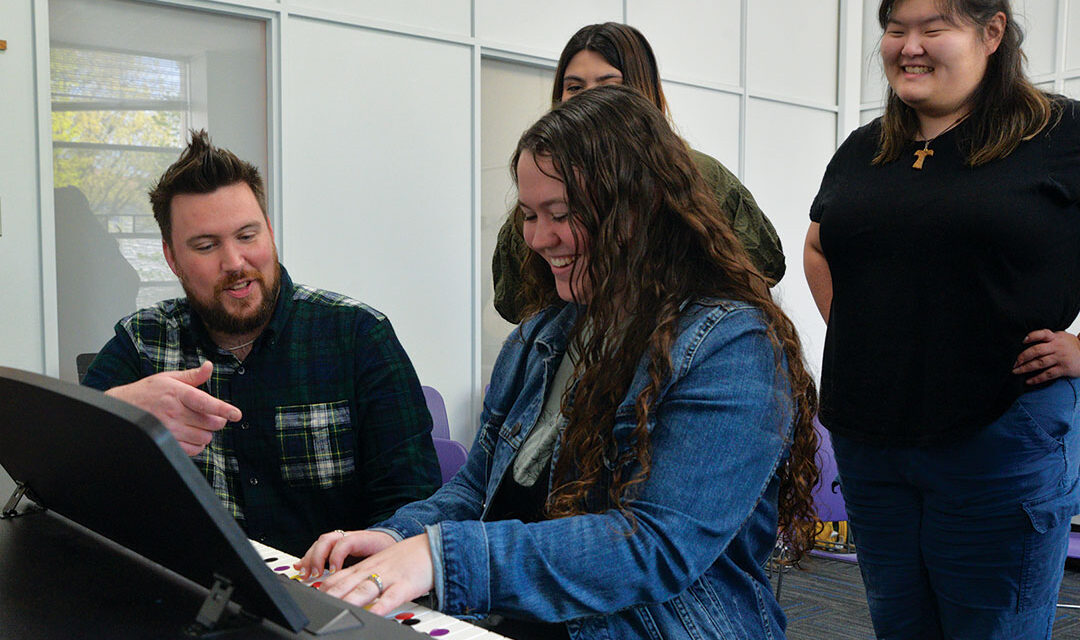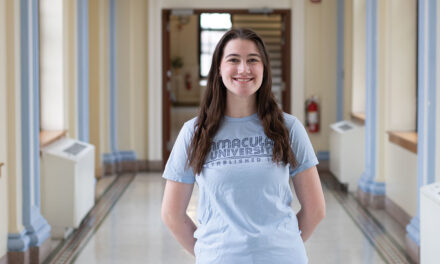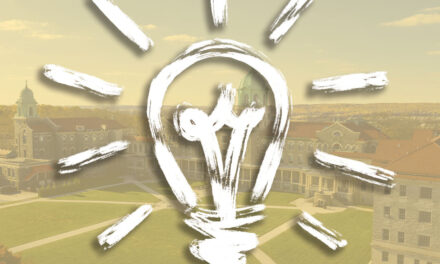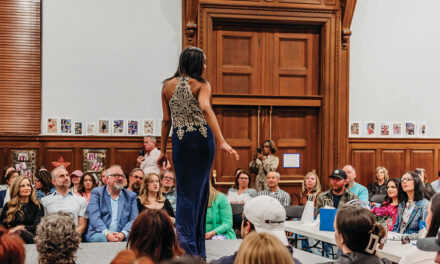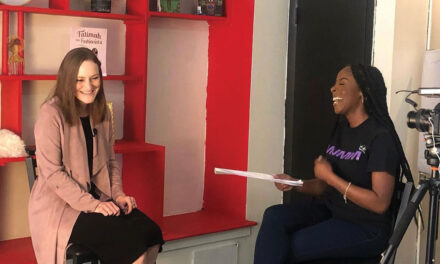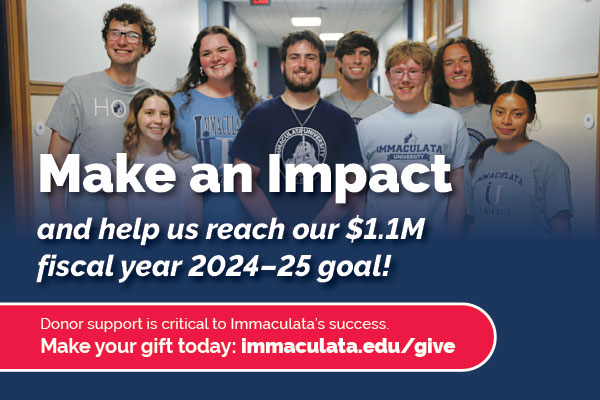Music therapist Daniel Benonis ’13, ’15 M.A. felt intimidated as he quietly approached his new client, who was lying in a seclusion room. The client, a man on the autism spectrum, had a history of being violent and was nonverbal, Benonis had been told.
“Hi, my name is Dan, and I’d like to play some music for you today,” Benonis said. Hoping to soothe the client, he started playing an ocean drum, with metal beads inside that sound like ocean waves. The client became agitated, overstimulated by the sound.
Benonis shifted to playing his guitar. He strummed and sang “Let It Be” by the Beatles while watching the client’s body language carefully.
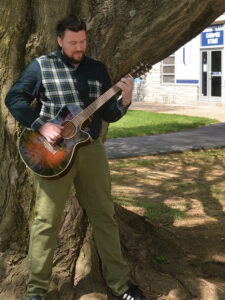 The man became calmer. He looked up at Benonis and said, “Pink Floyd.”
The man became calmer. He looked up at Benonis and said, “Pink Floyd.”
Stunned, Benonis scrambled to think of a Pink Floyd song to play next. “It wasn’t that he was nonverbal,” Benonis reflected later. “It was just that he didn’t have the avenue or didn’t have the opportunity to speak.”
Over time, Benonis worked with the client and helped him gradually learn to tolerate the sound of the ocean drum and even participate in group activities again. “He had bumps along the road,” Benonis said. “But music can be that bridge.”
As an assistant professor and director of music therapy clinical training at Immaculata, Benonis teaches his students to prepare a session plan but also to “be prepared to throw that out the window because sometimes it’s just not going to work for that client.” He trains music therapy students to use music and creativity to adapt to clients’ needs in the moment.
“To me, the opposite of creativity would be rigidity—something that’s not flexible, not bendable,” Benonis said. Using music creatively is like pouring water over a jar of rocks, he said. The water can reach not just the rocks on the surface, but the ones at the bottom. Music can move past obstacles and touch places inside clients that may not be accessible to other interventions.
While music can be powerful by itself, Benonis emphasizes the need for skilled practitioners to tailor music to clients’ needs for maximum benefit. “As healing as music can be, it can be difficult for people,” Benonis cautioned. He gave the example of retirement homes playing music from residents’ early years, which may be enjoyable for some but could bring back traumatic memories for others.
“We experience music differently,” Benonis said. He trains students to get to know their clients and their varied relationships with music. He also prepares students to handle situations in which clients feel triggered and help them process painful experiences.
“I believe that music can heal. I think that’s why I’m here.”
Benonis frequently begins group music therapy sessions with a check-in, asking clients, “How are you connecting with music? What do you feel like you need?” From there, he makes clinical decisions about whether clients need guidance to shift out of their current state or remain where they are. For example, if the group seems energetic, he sometimes gives them instruments to play, harnessing their energy to express themselves, connect with each other and build rapport. Or if clients seem quiet and withdrawn, Benonis may choose songs to guide them in meditation and optional discussion.
“The beauty of music is that everyone can hear the same song and take something different from it,” he said. He gives the example of Coldplay’s “Fix You,” a song about healing that he likes to use in groups with people recovering from substance use disorder. Though the song wasn’t written specifically for this population, Benonis encourages his group to think about what the song says to them, regardless of what the composer intended. Some group members connect with the song’s line, “When you try your best, but you don’t succeed,” relating it to their experiences with relapsing and participating in rehab programs.
Benonis, who is conducting his dissertation research on music therapy and addiction, says music can help clients mourn the loss of a substance that was part of their lives and build coping skills, self-awareness and a support network. He has seen the unique power of music to reach people in agonizing circumstances. “People still connect with music even when they’re in the depths of their addiction and they have nothing,” he said.
Even so, “people won’t change unless they want to,” he continued. “My job is to be a guide; and the music’s job is to be a guide to help [clients] to come to [their] own insights. And with those insights, they reach their own recovery. When it’s forced upon people, it doesn’t work as effectively.”
To support clients in their recovery process, Benonis uses songs such as “Stand by Me” by Ben E. King. He invites clients to reflect on who is standing by them, or who they want to stand by them. He sometimes leads them to replace some of the lyrics, perhaps replacing “Darling, darling,” with “Friends and family” or a person’s name.
“I believe that music can heal. I think that’s why I’m here,” Benonis reflected. “It’s been such a meaningful part of my life.”

